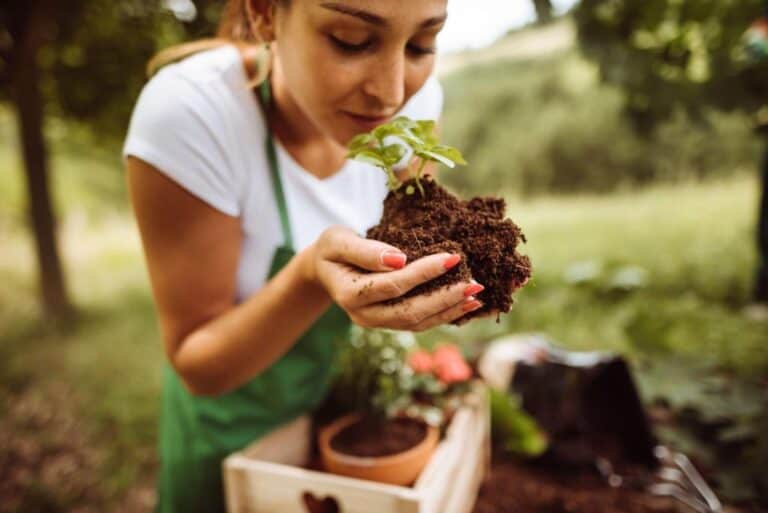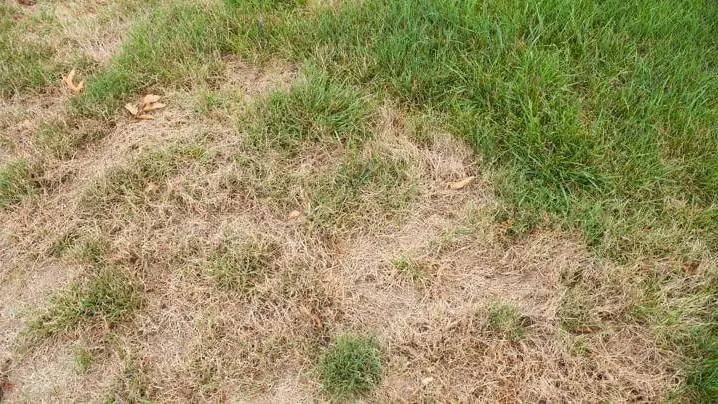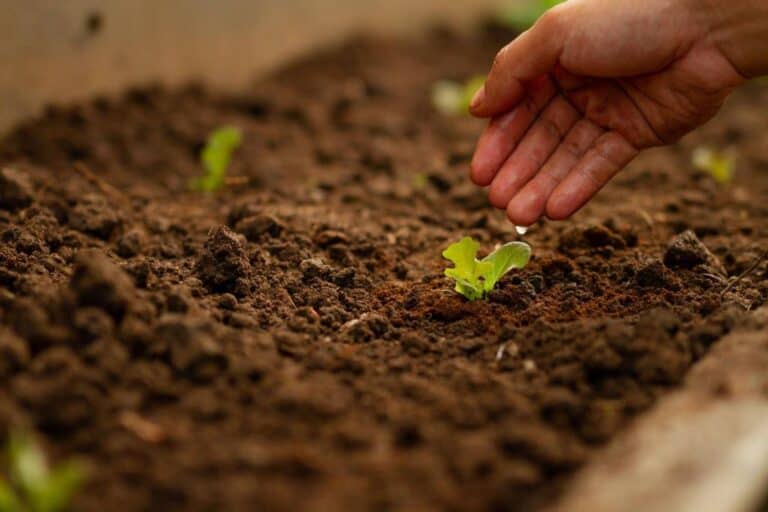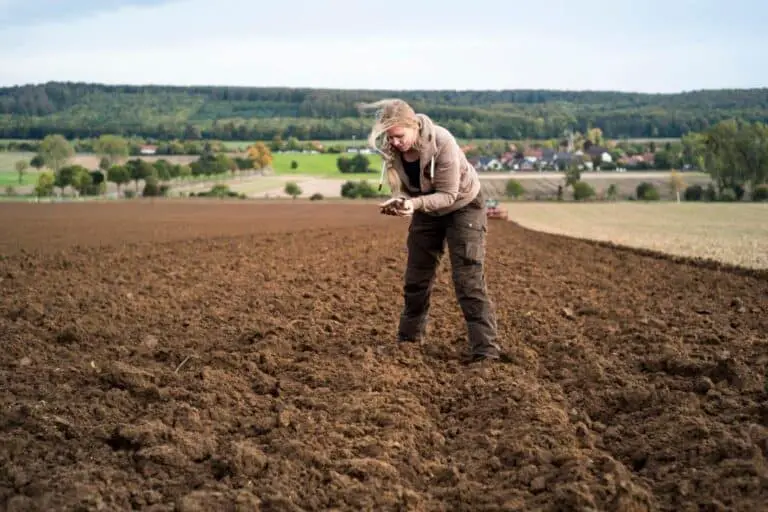Does Top Soil Go Bad? When Is It Time for Soil Replacement?
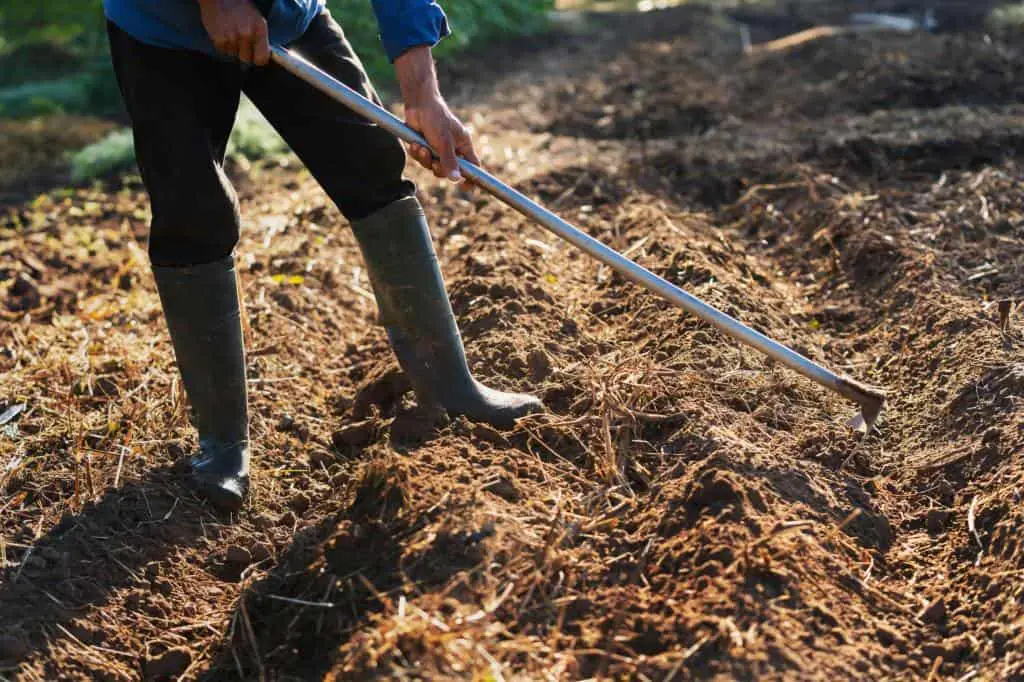
If you’re a gardening enthusiast or a homeowner with a lush green lawn, you’ve probably heard the phrase “topsoil” thrown around quite a bit. Topsoil is the upper layer of soil that’s rich in nutrients, making it ideal for plant growth. It’s the dark, mysterious layer that cradles life’s lush tapestry, providing the nourishment that makes our plants flourish and our green spaces thrive. But have you ever wondered if topsoil can go bad? Is there a point when you need to consider replacing it?
In this article, we’ll explore the lifespan of topsoil, signs it may be time for soil replacement, and tips on maintaining healthy soil. We venture into the heart of the horticultural enigma. “Does Topsoil Go Bad? When Is It Time for Soil Replacement?”
So, let us embark on this journey, armed with curiosity and a thirst for understanding, as we unearth the truth about topsoil and its enduring mysteries.
Understanding Topsoil
Before delving into the question of whether topsoil can go bad, it’s essential to understand what topsoil is and why it’s crucial for your garden or lawn. Topsoil is the uppermost layer of soil, typically the top 2 to 8 inches, which is teeming with organic matter, microorganisms, and essential nutrients like nitrogen, phosphorus, and potassium.
What sets topsoil apart is the teeming life it harbors. It’s a bustling ecosystem in itself, where tiny microorganisms dance their unseen ballet and organic matter transforms into life-enriching nutrients. This microcosm is home to a bustling community of beneficial bacteria, fungi, and other microorganisms that work harmoniously to support plant life.
This layer is essential for plant growth, as it provides the necessary nutrients and serves as a reservoir for moisture. In essence, topsoil is not just dirt; it’s the dynamic foundation upon which your garden’s success rests. Its ability to nurture life and provide vital nutrients makes it an invaluable asset in your quest for a thriving garden or lush lawn.
Does Topsoil Expire?
Topsoil is a natural resource, and like any other natural resource, it undergoes changes over time. However, it doesn’t exactly “expire” in the way perishable goods do. Instead, the quality and fertility of topsoil can decline if not properly maintained. Here are some factors that can affect the quality of topsoil:
1. Erosion
Erosion is one of the primary factors that can lead to topsoil degradation. When heavy rains or strong winds occur, the top layer of soil can be washed or blown away, taking valuable nutrients with it. This loss of topsoil can lead to a less fertile and less productive garden or lawn.
2. Compaction
Another factor that can harm topsoil is compaction. Foot traffic, heavy machinery, or even excessive rainfall can compress the soil particles, reducing the space available for air and water. This makes it harder for plant roots to penetrate the soil and access nutrients.
3. Nutrient Depletion
Continuous cultivation of the same area without proper replenishment of nutrients can lead to nutrient depletion in the topsoil. Plants absorb essential nutrients from the soil, and without regular additions of compost or fertilizer, these nutrients can become deficient.
4. pH Imbalance
Soil pH is a crucial factor in plant growth. If the pH level becomes too acidic or alkaline, it can affect plant nutrient availability. Regular soil testing and amendments are necessary to maintain the proper pH balance.
Signs It’s Time for Soil Replacement

While topsoil doesn’t exactly expire, there are clear signs that indicate it may be time for soil replacement or intensive soil improvement efforts. Here are some telltale signs to watch for:
| Signs of Soil Trouble | What They Indicate |
| Poor Drainage | Waterlogged soil can indicate compaction or clay soil. |
| Persistent Weeds | indicates a nutrient imbalance or inadequate weed control. |
| Stunted Plant Growth | May suggest nutrient deficiency or pH imbalance. |
| Erosion and Soil Loss | Often caused by insufficient ground cover. |
| Declining Soil Structure (Crumbly Texture) | Points to a lack of organic matter. |
| Foul Odor or Pest Infestations in Soil | It could be a sign of soil disease or poor drainage. |
| Yellowing Leaves (Chlorosis) | Typically indicates nutrient deficiency. |
If you observe any of these signs in your garden or lawn, it’s time to assess your topsoil’s health and consider soil replacement or improvement measures.
See also: Does Topsoil Have Manure in It?
Soil Replacement vs. Soil Improvement
Before rushing to replace your topsoil, it’s essential to determine whether you need a complete overhaul or if soil improvement measures will suffice. Soil replacement involves removing the existing topsoil and adding new, high-quality topsoil. This can be a significant undertaking, both in terms of labor and cost.
On the other hand, soil improvement focuses on enhancing the existing topsoil’s quality without entirely replacing it. This approach may include adding compost, organic matter, or soil conditioners to address specific soil issues. Soil improvement is generally less invasive and more cost-effective.
The choice between soil replacement and soil improvement depends on the severity of your soil’s condition, your budget, and your long-term gardening goals.
Can I Use Old Topsoil?
When it comes to reusing topsoil from your previous gardening endeavors, the answer isn’t a simple “yes” or “no.” It all hinges on the condition of the soil and the health of the plants it has previously nurtured.
1. Soil Health Matters: If your topsoil has only been used for a single season and you’ve enjoyed a healthy, thriving garden with no signs of plant diseases like downy mildew, then you’re in luck. It’s likely safe to reuse that soil for your next planting season.
2. Beware of Plant Diseases: However, if your previous garden faced challenges such as plant diseases, it’s essential to exercise caution. Reusing soil that has hosted diseases can lead to a recurrence of the problem. In such cases, it’s advisable to either replace the soil or take steps to sterilize it thoroughly before using it again.
Sterilizing soil can be done through various methods, such as soil solarization or heat treatment, ensuring that harmful pathogens are eradicated and giving your plants a fresh, disease-free start. So, while recycling old topsoil can be a sustainable practice, always prioritize the health of your plants when making this decision.
Tips for Maintaining Healthy Topsoil
Preventing topsoil degradation and the need for replacement begins with good soil management practices. Here are some tips to help you maintain healthy topsoil:
1. Mulch Regularly
Applying mulch to your garden or around trees and shrubs helps retain moisture, prevent erosion, and regulate soil temperature. Organic mulch, like wood chips or straw, also adds valuable organic matter to the soil as it breaks down.
2. Practice Crop Rotation
If you have a vegetable garden, practice crop rotation to prevent nutrient depletion and soilborne diseases. Rotating crops each season can help maintain soil fertility.
3. Avoid Overwatering
Overwatering can lead to soil compaction and poor drainage. Use a soaker hose or drip irrigation to provide water directly to plant roots and avoid waterlogging the soil.
4. Add Organic Matter
Regularly incorporate organic matter, such as compost or well-rotted manure, into your topsoil. This improves soil structure, adds nutrients, and enhances microbial activity.
5. Test Soil pH
Periodically test your soil’s pH level to ensure it falls within the optimal range for your plants. Adjust the pH with lime (for acidity) or sulfur (for alkalinity) as needed.
6. Plant Cover Crops
Planting cover crops like clover or rye during the off-season can help prevent erosion, add organic matter, and fix nitrogen in the soil.
In Conclusion
Topsoil doesn’t exactly have an expiration date, but it can deteriorate over time due to erosion, compaction, nutrient depletion, and other factors. Recognizing the signs of soil trouble and implementing soil improvement practices can help you maintain healthy topsoil for your garden or lawn.
Remember that prevention is often more manageable and cost-effective than soil replacement. By following good soil management practices and staying attentive to your soil’s needs, you can enjoy thriving plants and a lush, green landscape for years to come. So, while topsoil may not go bad in the traditional sense, it’s up to you to ensure it remains fertile and conducive to plant growth.
FAQs on Maintaining Healthy Garden Soil
How often should I replace my topsoil?
Topsoil replacement frequency depends on various factors, including soil quality and usage. In general, you may not need to replace it often. Regular soil testing can help determine when replacement is necessary.
Can I revive deteriorating topsoil without replacing it?
Yes, deteriorating topsoil can often be revitalized through soil amendments like organic matter, compost, and proper fertilization. However, severe degradation may require replacement for optimal results.
What are the best soil testing kits for home use?
Some popular home soil testing kits include the Rapitest Soil Test Kit and the Luster Leaf 1601 Rapitest Soil Test Kit. These kits provide basic insights into soil pH, nutrients, and composition.
Are there natural ways to improve topsoil quality?
Yes, natural methods like crop rotation, cover cropping, and mulching can enhance topsoil quality. These practices promote nutrient cycling and soil structure improvement.
How does soil degradation affect crop yields?
Soil degradation can significantly reduce crop yields by depleting nutrients, impairing water retention, and increasing susceptibility to pests and diseases. It’s a major concern for agriculture worldwide.
How much does it cost to replace topsoil in a garden or landscaping project?
Costs vary depending on the area to be covered, the depth of replacement, and the type of topsoil used. It can range from a few hundred to several thousand dollars.
What long-term strategies can homeowners and farmers adopt to maintain healthy topsoil?
Long-term strategies include crop rotation, cover cropping, reduced tillage, erosion control measures, and responsible fertilizer use. These practices promote soil health and sustainability.

